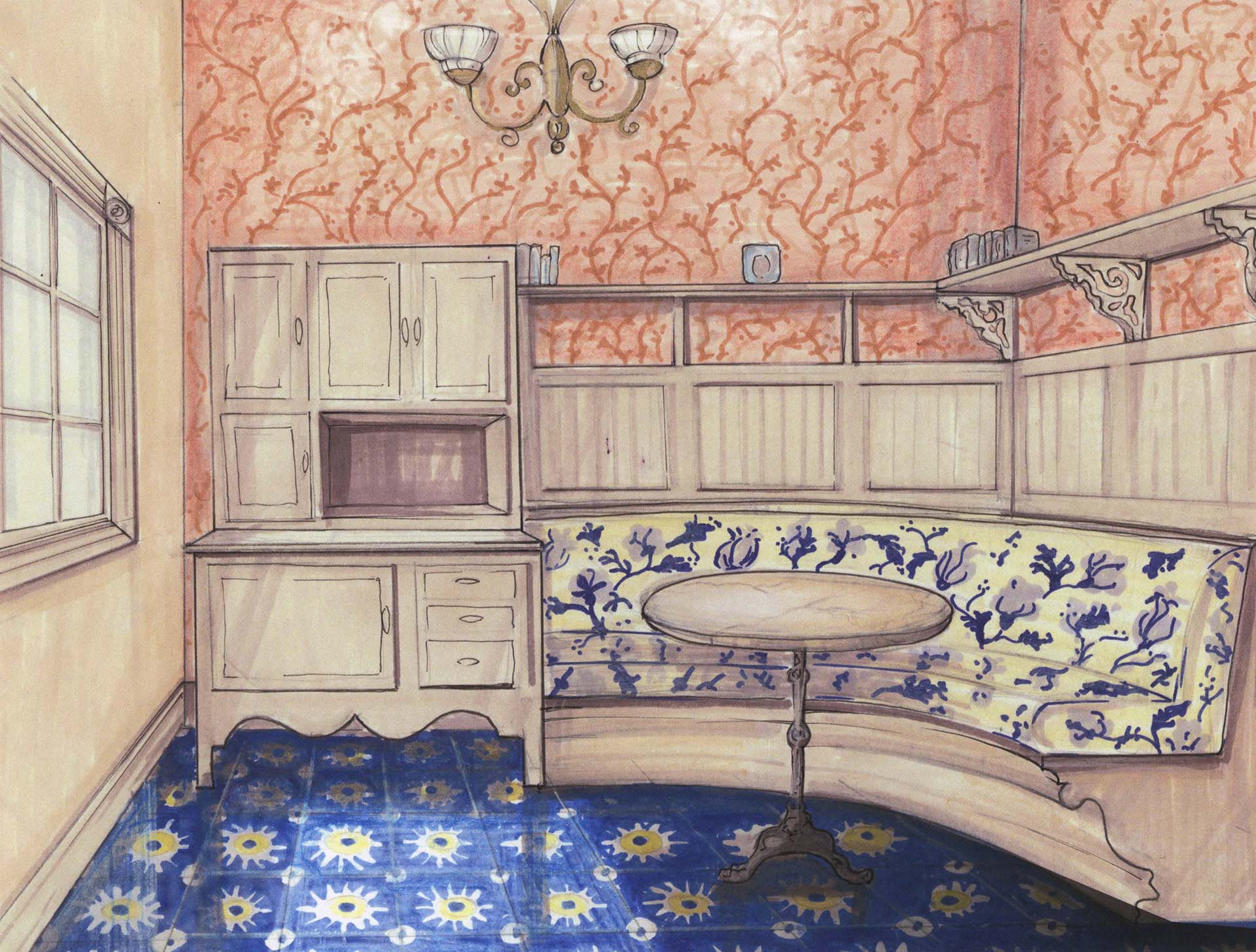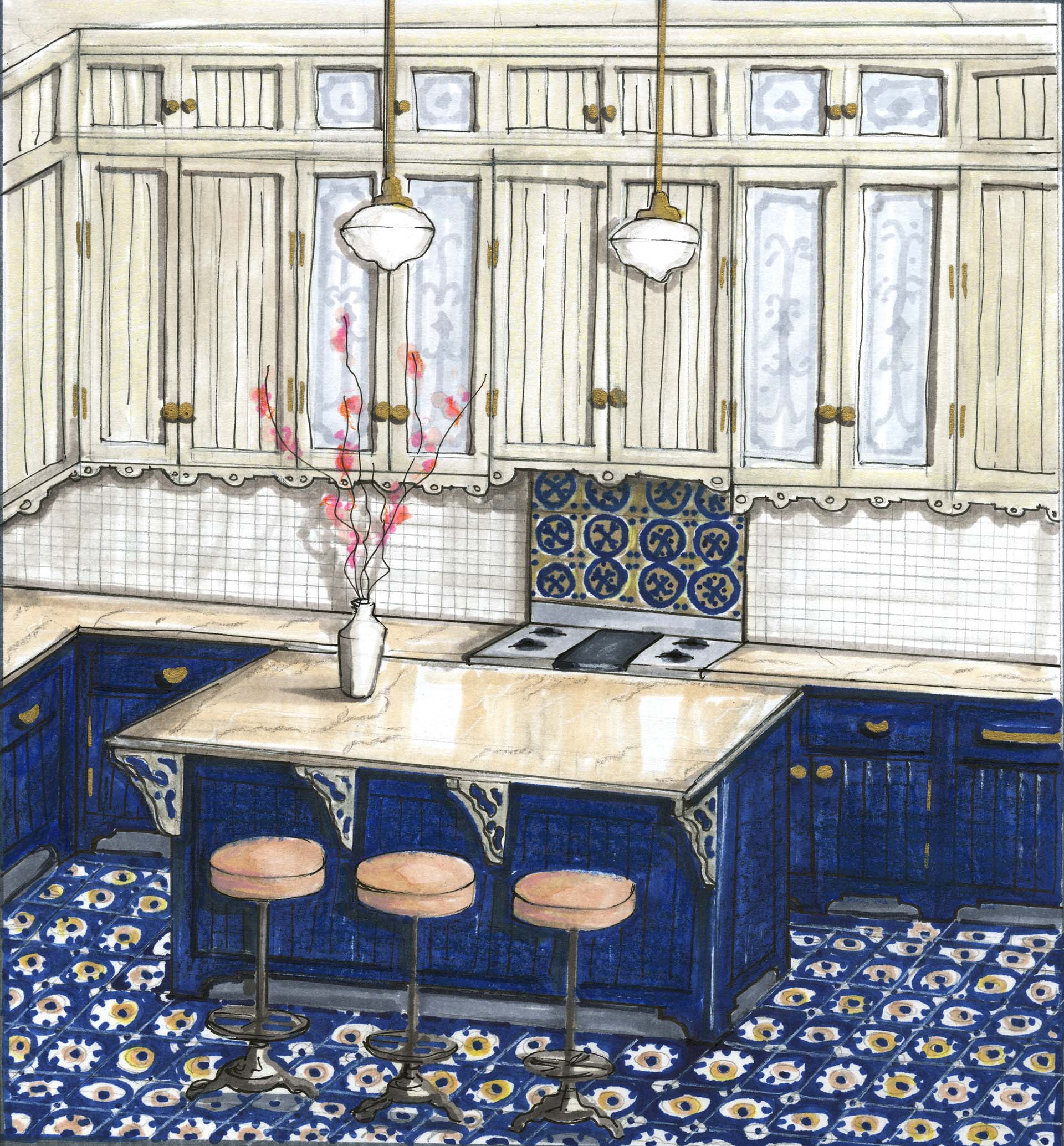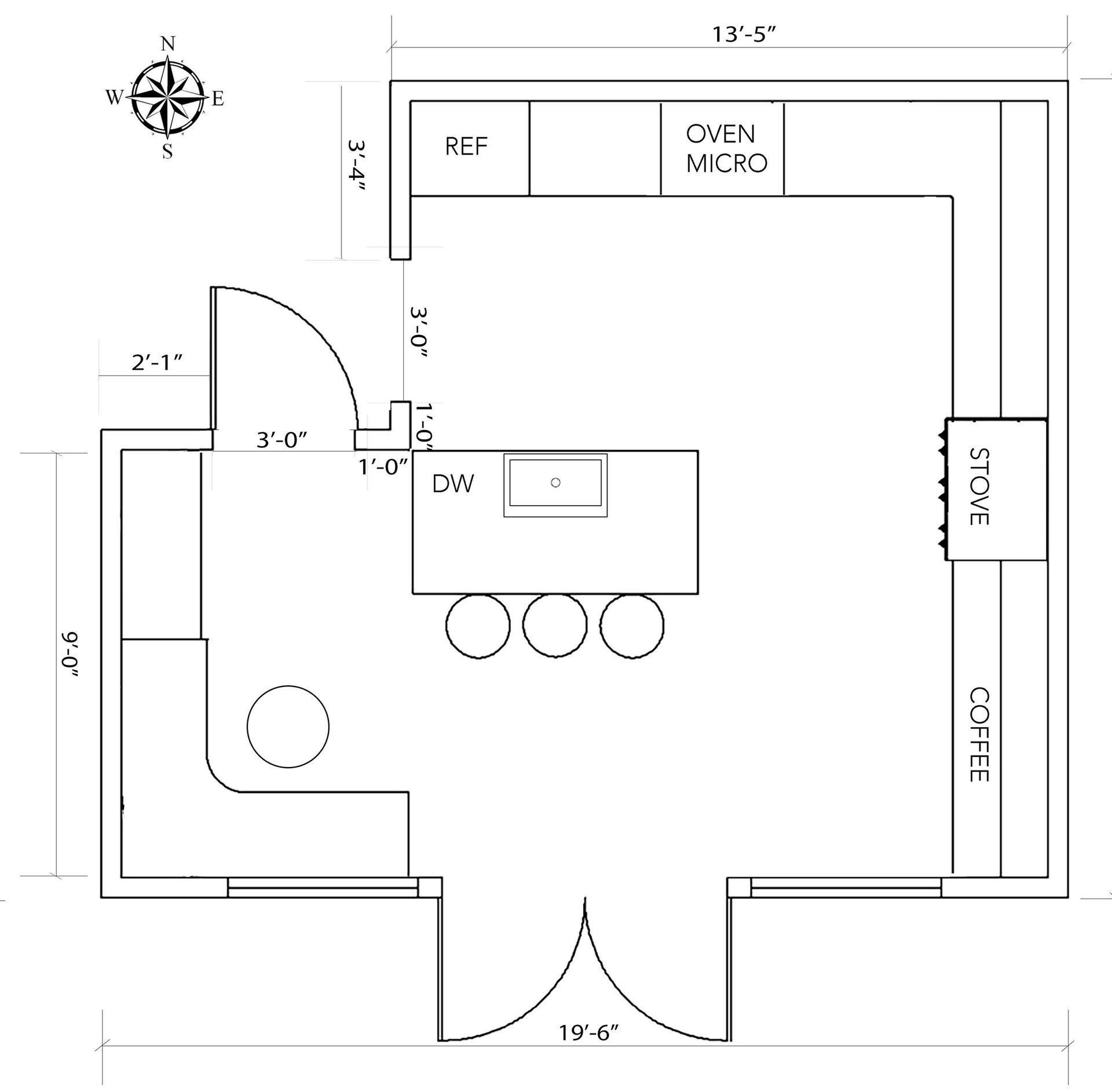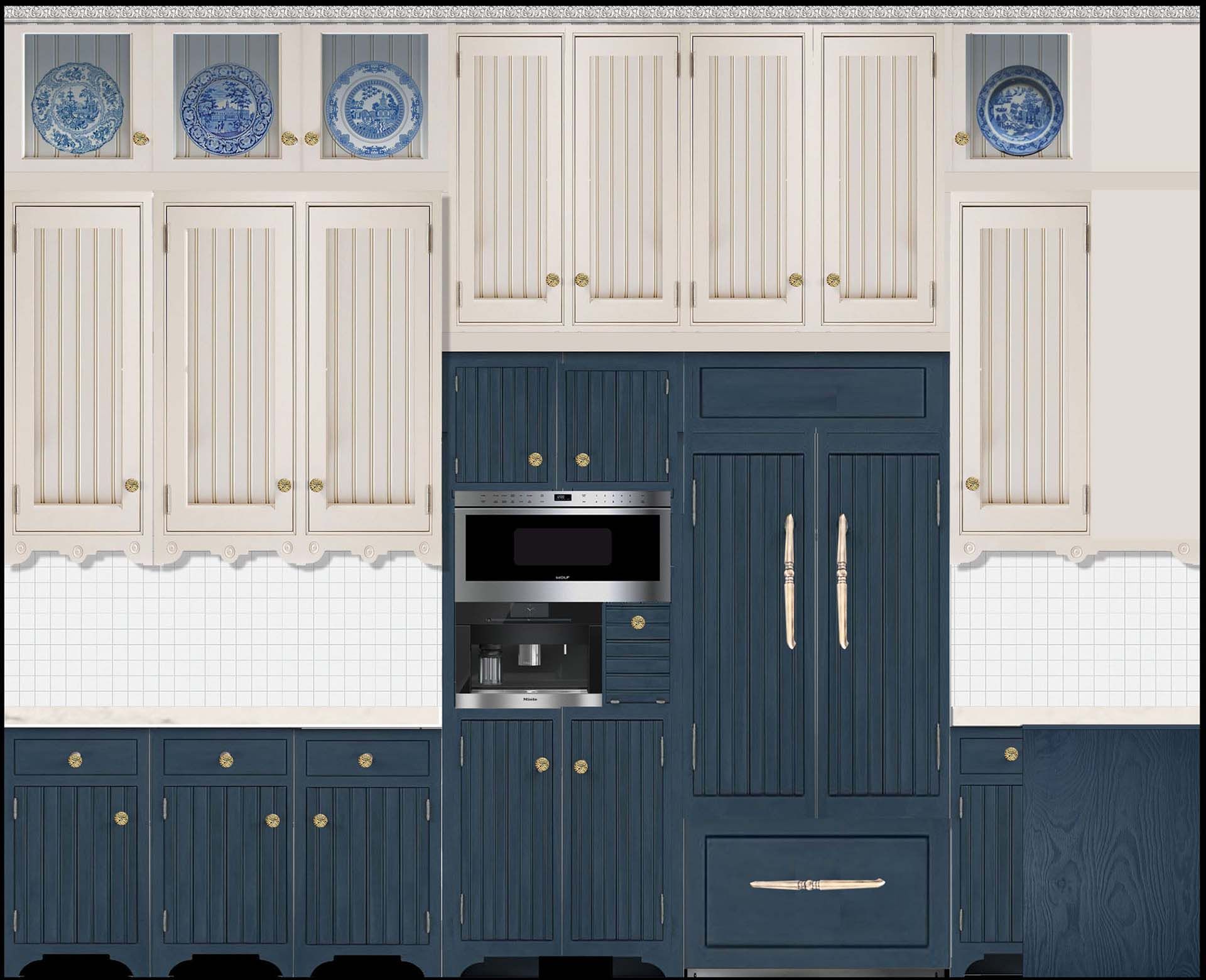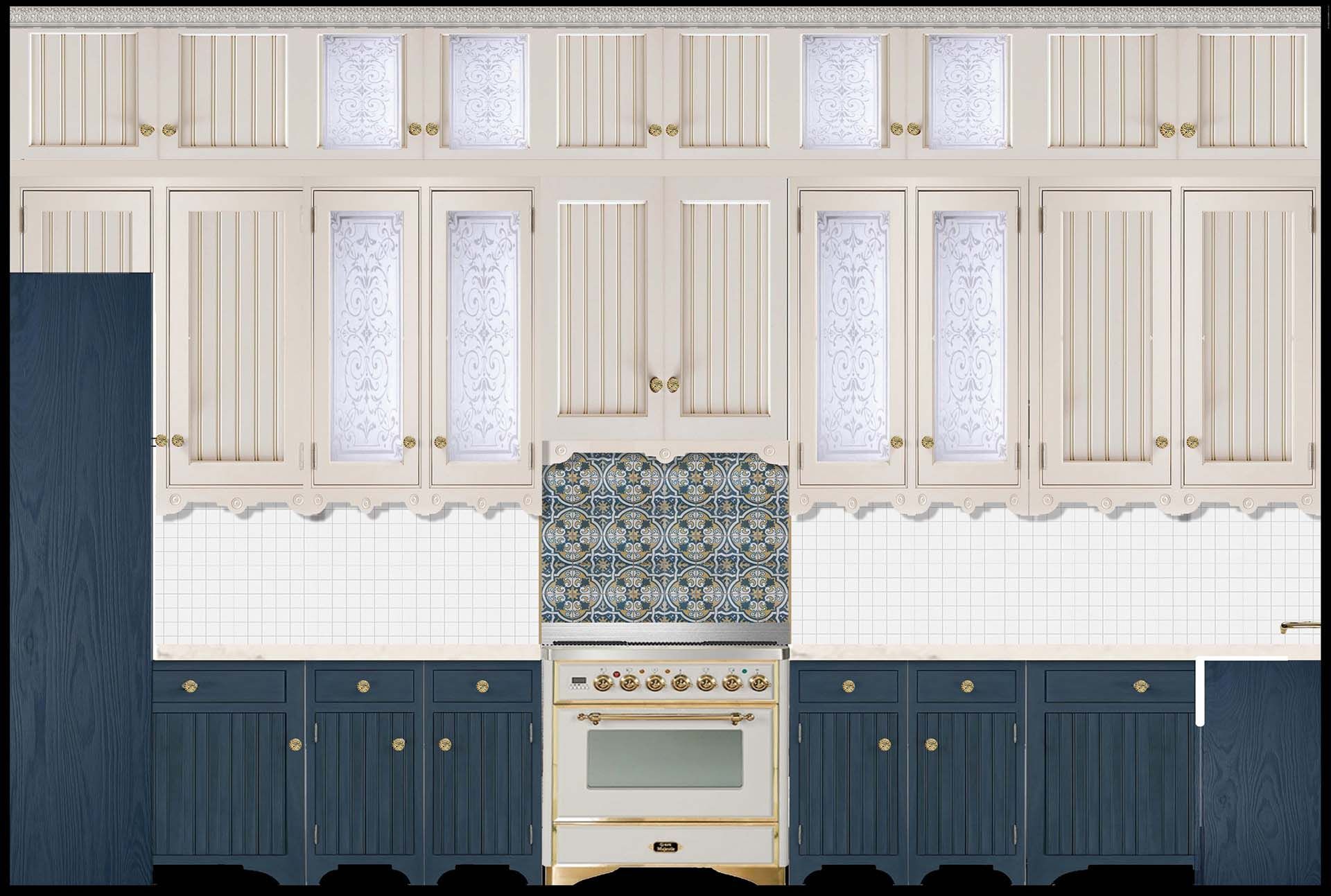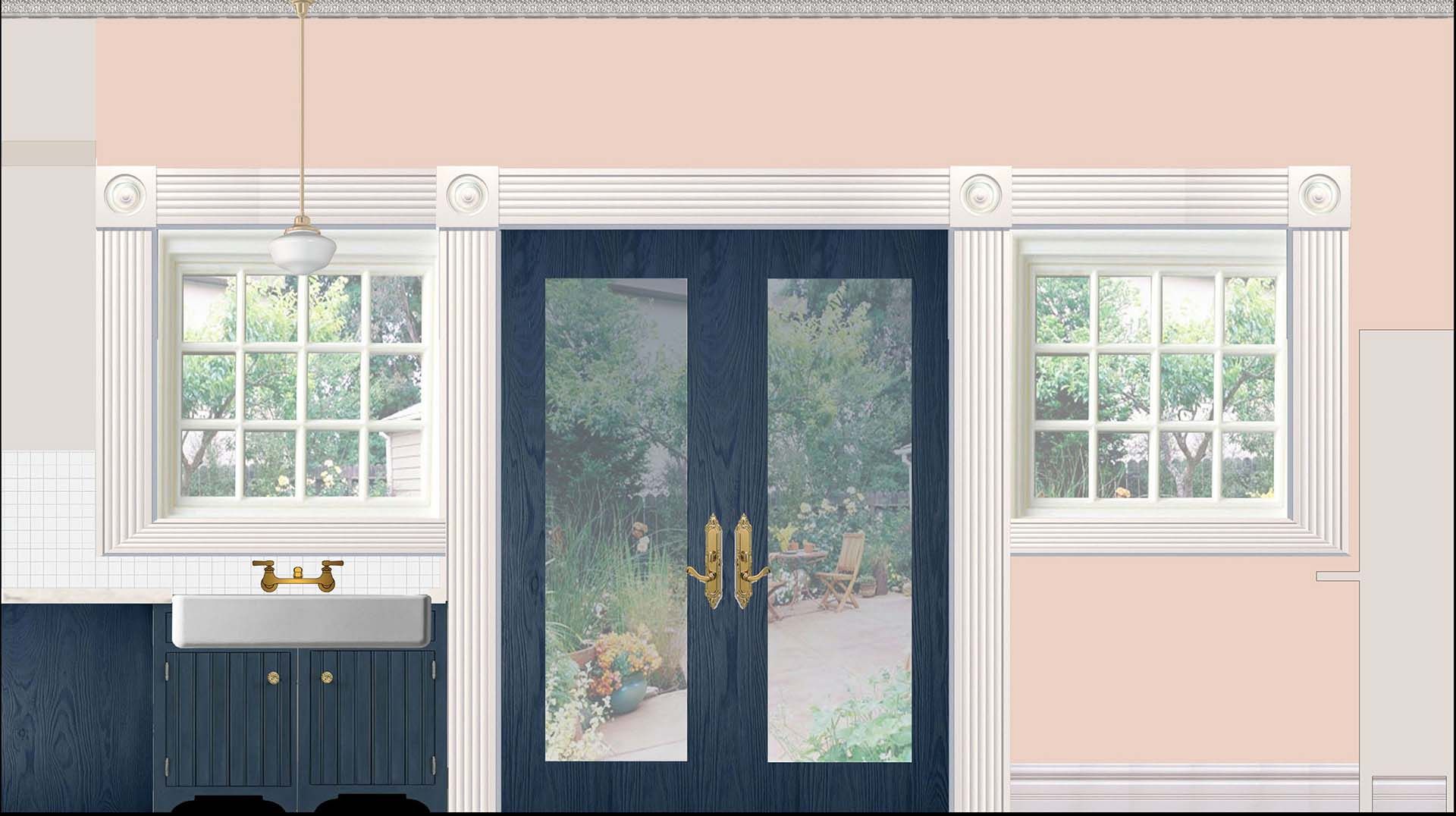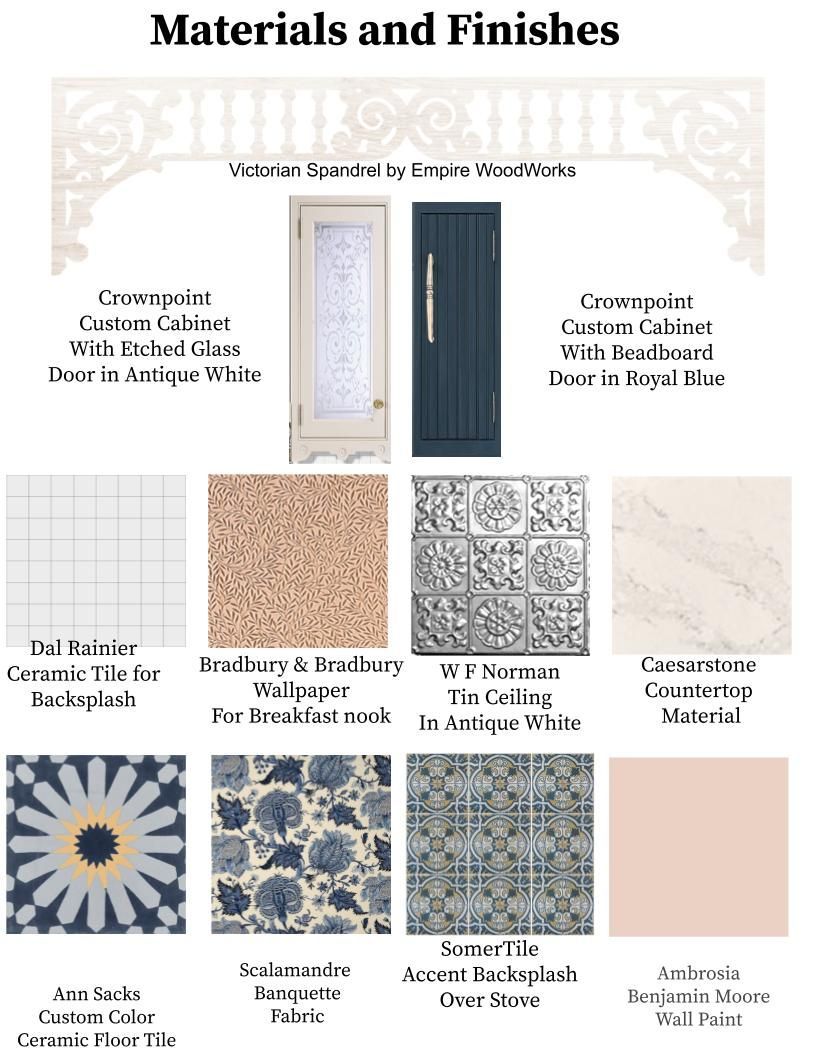San Francisco Victorian Residential Kitchen
From Modern Remodel to Period Reinterpretation
It is an exercise in taking a cold, minimalist space and converting it into a warm, aesthetically pleasing, functional space that captures the charm and ornamentation of the Victorian era while utilizing up-to-date technology.
From Modern Remodel to Period Reinterpretation
As a design firm specializing in restoring Bay Area Victorians, we at Gaslight Interiors see it every day: clients who cherish the ornate details of their homes, (elements often referred to as architectural gingerbread) but are not keen on living in the 19th century. Such is the case with our client, Karen, an architect whose 1890s Victorian kitchen in San Francisco's Pacific Heights neighborhood had been modernized over the years with little regard for creating an authentic period atmosphere. Quite the opposite, our client’s kitchen had been designed with a minimalist aesthetic, devoid of decoration. Her stainless steel appliances, stark white European-style cabinets without decorative hardware, and built-in glass cooktop screamed modern high-tech.
Kitchens in Victorians, like Karen’s, were purely utilitarian spaces, usually devoid of ornamentation, where the owners of the house rarely ventured. Karen told us by phone that she and her family use the kitchen space more than any other room in the home, not only to cook but also as a home office and general gathering space. As our team approached Karen’s house for our first meeting, we observed that the exterior of the house had been meticulously restored to its 19th-century grandeur, and the original crown moldings, door casings, baseboards, and ceiling medallions had been preserved inside. The cold, sterile kitchen looked very out of place. Karen was looking for a significant kitchen transformation.
Based on our client’s description of her dream Victorian navy blue, white, and gold kitchen, we have designed a space where Karen and her family can cook, gather, and work. In contrast to her existing kitchen, the space now exudes the warmth of a Victorian hearth, including an old-fashioned-looking but state-of-the-art ILVE Majestic range and convection oven. Our client was adamant about choosing cutting-edge appliances, but she agreed to hide them to preserve the old-fashioned feel of the space.
Other period elements include custom cabinetry from Crown Point with etched glass inset into some upper cabinets; a white Kohler farm sink; schoolhouse pendant fixtures from Rejuvenation Lighting with opal glass shades; a W.F. Norman tin ceiling and crown moulding; floral patterned ceramic tile on the floor and backsplash above the stove; a fretwork spandrel separating the kitchen and breakfast nook; and Bradbury and Bradbury hand-printed wallpaper on the breakfast nook walls. The crowning jewels are the reproduction Victorian hardware, including a polished brass door pull specially designed for Sub-Zero.


